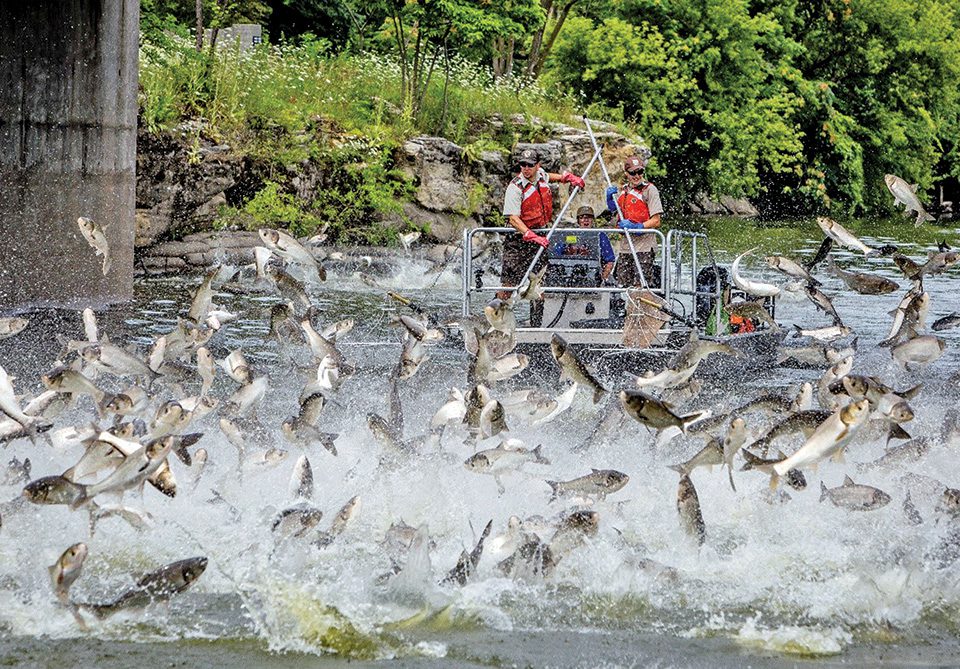It’s been years since Asian carp first made headlines with jaw-dropping video of massive schools of the invasive fish leaping from the water in U.S. river systems. Their seemingly inexorable spread through the Mississippi River system, up the Ohio and Illinois rivers to the Great Lakes has wreaked havoc on recreational fisheries.
More recently, the spread of silver carp into the Tennessee River system has driven fisheries managers in Kentucky and Tennessee into overdrive seeking methods to slow the scourge.
At least in Alabama, there is some cautious optimism coming from the state’s Wildlife and Freshwater Fisheries (WFF) Division. Alabama Department of Conservation and Natural Resources writer David Rainer recently covered the issue with WFF Chief of Fisheries Chris Greene.
Silver carp have been found in Pickwick and Wheeler reservoirs in Alabama’s portion of the Tennessee River. Greene told Rainer he is hopeful the moderately abundant population of silver carp in Pickwick remains contained.
Alabama has only received federal funding to combat silver carp since 2019, and currently the emphasis is on equipping WFF to better handle the situation.
“It’s a learning experience. We’re learning from other states like Kentucky and Tennessee. They have been doing this a whole lot longer than us,” Greene told Rainer. “Hopefully what we learn from them will make our sampling more effective.”
Kentucky and Tennessee subsidize commercial anglers to remove silver carp. The good news for Alabama is silver carp have had a limited range since the first one was detected in state waters about five years ago.
“Our limited field sampling has not yielded any silver carp outside of Pickwick Reservoir in Alabama,” Greene said. “From what we have been able to determine from angler catches, the farthest upstream location where silver carp have been confirmed by a commercial fisherman in Alabama is Wheeler Reservoir.”
In an effort to deter the spread, Alabama issued a Wild Baitfish Regulation that restricts the transportation of bait between water bodies.
“Young Asian carp closely resemble other live baitfish that are commonly used by anglers – skipjack herring, gizzard shad and threadfin shad,” Greene said. “If we have anglers going out throwing cast nets and catching several species and taking these to other water bodies, it could increase the spread of Asian carp.”
The Tennessee Valley Authority (TVA) is considering several methods to control the spread, including fish barriers at 10 locks controlled by TVA. One type of fish barrier under consideration is a Bioacoustics Fish Fence (BAFF), which utilizes a combination of sound, light and air bubbles. This type of barrier is installed at Barkley Lock and Dam in Kentucky and is currently being studied for its effectiveness.
TVA is also considering adjusting river flow rates during Asian carp spawning periods, which are usually during high-water events. Studies show that Asian carp eggs will sink to the bottom and die with low river flow.
“To date, we have not had any confirmed reports of silver carp in Guntersville Reservoir or Wilson Reservoir. We certainly hope it stays that way,” said Greene.
To read David Rainer’s entire report, go to www.outdooralabama.com.
